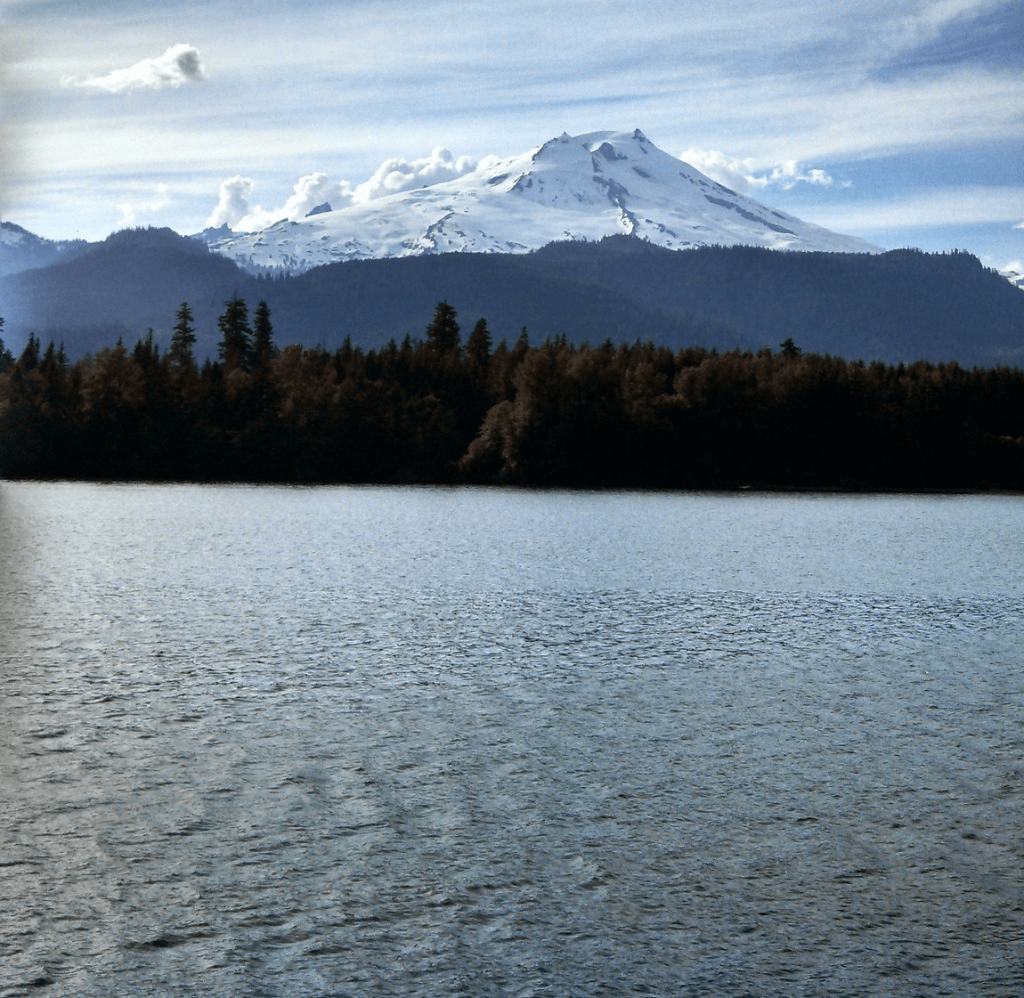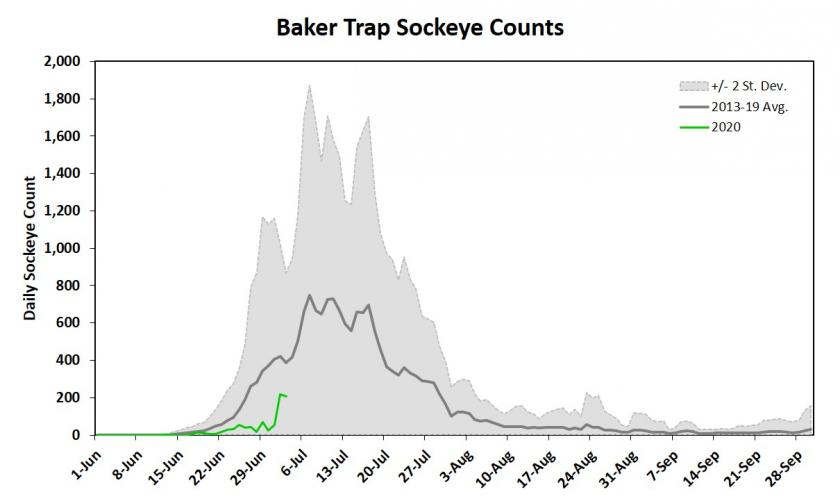
Slow Start To Baker Sockeye Return Draws Concern
It’s been a nail-biting couple of weeks for close watchers of Baker Lake sockeye counts. The very low and slow start to this year’s run has raised concerns about whether eggtake goals will even be met this year.

Longtime Western Washington sockeye and recreational fishing advocate Frank Urabeck has been keeping a particularly sharp eye on counts at the Baker River trap, where fish are collected for transport up to Baker Lake.
“The 633 count (through Thursday, July 2) is only 26 percent of the same date in 2019, the lowest sockeye return year since 2013,” he said in a statement earlier today.
The count as of this afternoon now stands at 838, but it all worries Urabeck given that last year’s return to the trap was 13,103 and 10,000 are needed to meet hatchery broodstock and wild spawning goals.
“Based on the trap counts through July 2, I am predicting that the run will come in well below the 13,242 forecast, not meet conservation needs of 10,000 sockeye, and certainly sockeye anglers will sit on Baker Lake beaches for the first time since the Baker Lake fishery began in 2010, only four years after we had our last Lake Washington fishery in 2006,” Urabeck stated.

His back-of-the-envelope calculations – he’s a retired Army Corps engineer for the Seattle District – this week have had the return coming in as low as 5,500, with a midrange estimate of 7,500 to the trap, but possibly as many as 11,000.
All are below WDFW’s median forecast of 13,242 sockeye.
The agency’s worst-case forecast is 8,056 to the mouth of the Skagit (its best case is 22,017), and in early June the agency scrubbed the sport season on the big river in hopes of getting as many to the trap as possible.
“Given this forecast, largely as a result of poor ocean conditions, we’re taking these steps to ensure we’re meeting our commitments to conservation,” said Brett Barkdull, WDFW’s district fish biologist said in a press release at the time.
Urabeck has been leaning heavily on the biologist’s boss, regional fisheries manager Edward Eleazer, and others right up the chain of command all the way to Director Kelly Susewind.
He’s been requesting they urge two local tribes to delay their planned sockeye fisheries until mid-July, when typically 50 percent of the run has arrived at the trap, or scrub them entirely due to the uncertainty of the run.
According to Eleazer, the state and tribes have been in contact on the issue. The Swinomish have already delayed their season from the timing in WDFW and the Northwest Indian Fisheries Commission’s 2020-21 List Of Agreed Fisheries a week to two weeks compared to previous years “out of broodstock concerns.”
At least 397 sockeye had been caught by the tribe’s fishermen as of Tuesday morning, two-thirds of the way through their initial two-plus-day commercial opener, Eleazer stated. If the Swinomish wait too long, most of the sockeye could swim past their fishing grounds.
Another round of netting is scheduled to begin 8 a.m. Sunday through 8 p.m. Tuesday, with Upper Skagit Indian Tribe fishermen also expected to work in their grounds after they delayed their start.
As it stands, Eleazer said that the “total broodstock goal” of 302 sockeye to the trap by June 29th had been met and he said that 2020’s slow return is echoing 2014, when only around 295 salmon had been collected a couple days later that year.
“In that year the peak of the run occurred in mid-July, approximately one week later than the long-term average. Additionally, in 2014 the end-of-year trap count hit ~13,788, which is close to our preseason forecast of 13,242,” Eleazer said in an email.
Along with coming in under the forecast and threatening broodstock needs, it’s possible this year’s sockeye could surge in en masse and quickly meet goals. Or it could be late timed, like the Columbia’s this year, though it doesn’t sound like there is any correlation between the two runs, or any other with the Baker for that matter.
“We recognize that the current rate at which we are seeing sockeye return in 2020 invites much uncertainty with regards to predicting the final outcome,” Eleazer said earlier this week. “However, we are using the best available science to analyze run patterns, reduce fishing pressure, and ensure we meet our conservation goals for this sockeye stock.”
That didn’t cut it for Urabeck. As has been typical in their email exchanges in recent weeks, he shredded Eleazer’s response in a reply that day as well as in a statement this morning.
“Interesting that the department had super confidence in their preseason run forecast of 13,242 to acquiesce to the tribal commercial fisheries, but no confidence in the forecast to issue regulations for Baker Lake sport fishery,” Urabeck said.


He would rather fish close to his South Sound home, but with Lake Washington’s run all but done and Baker Lake’s at this point looking unlikely to get enough for a season, he as well as other Westside recreational sockeye anglers will be traveling over the Cascades to get their red salmon fix this season.
Fish have been biting too as a stronger-than-expected run surges up the Mid- and Upper Columbia toward the Brewster Pool. Counts many days at Bonneville in the gorge have been higher than the entire Baker forecast for the year.
